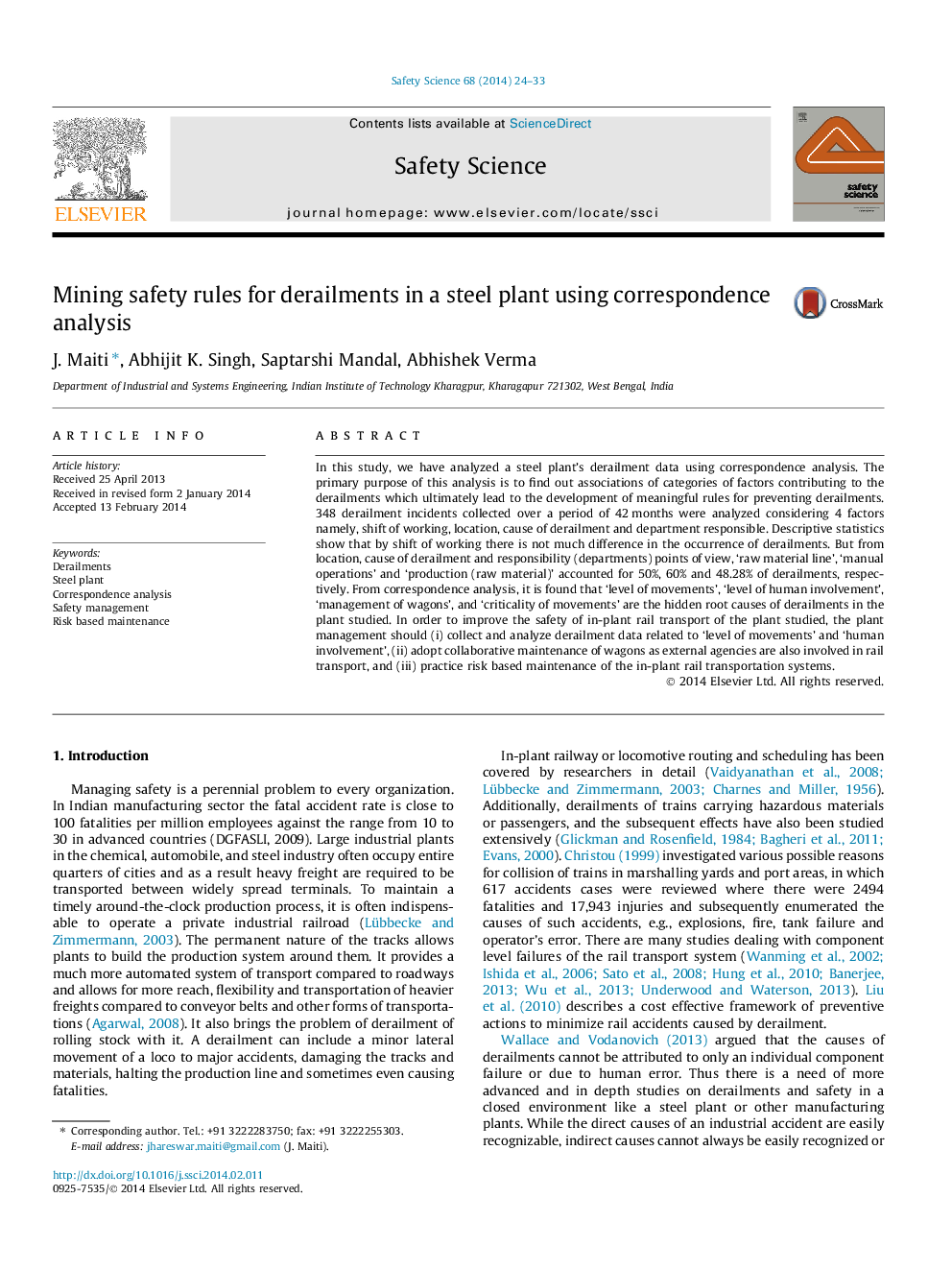| Article ID | Journal | Published Year | Pages | File Type |
|---|---|---|---|---|
| 6976184 | Safety Science | 2014 | 10 Pages |
Abstract
In this study, we have analyzed a steel plant's derailment data using correspondence analysis. The primary purpose of this analysis is to find out associations of categories of factors contributing to the derailments which ultimately lead to the development of meaningful rules for preventing derailments. 348 derailment incidents collected over a period of 42Â months were analyzed considering 4 factors namely, shift of working, location, cause of derailment and department responsible. Descriptive statistics show that by shift of working there is not much difference in the occurrence of derailments. But from location, cause of derailment and responsibility (departments) points of view, 'raw material line', 'manual operations' and 'production (raw material)' accounted for 50%, 60% and 48.28% of derailments, respectively. From correspondence analysis, it is found that 'level of movements', 'level of human involvement', 'management of wagons', and 'criticality of movements' are the hidden root causes of derailments in the plant studied. In order to improve the safety of in-plant rail transport of the plant studied, the plant management should (i) collect and analyze derailment data related to 'level of movements' and 'human involvement', (ii) adopt collaborative maintenance of wagons as external agencies are also involved in rail transport, and (iii) practice risk based maintenance of the in-plant rail transportation systems.
Related Topics
Physical Sciences and Engineering
Chemical Engineering
Chemical Health and Safety
Authors
J. Maiti, Abhijit K. Singh, Saptarshi Mandal, Abhishek Verma,
